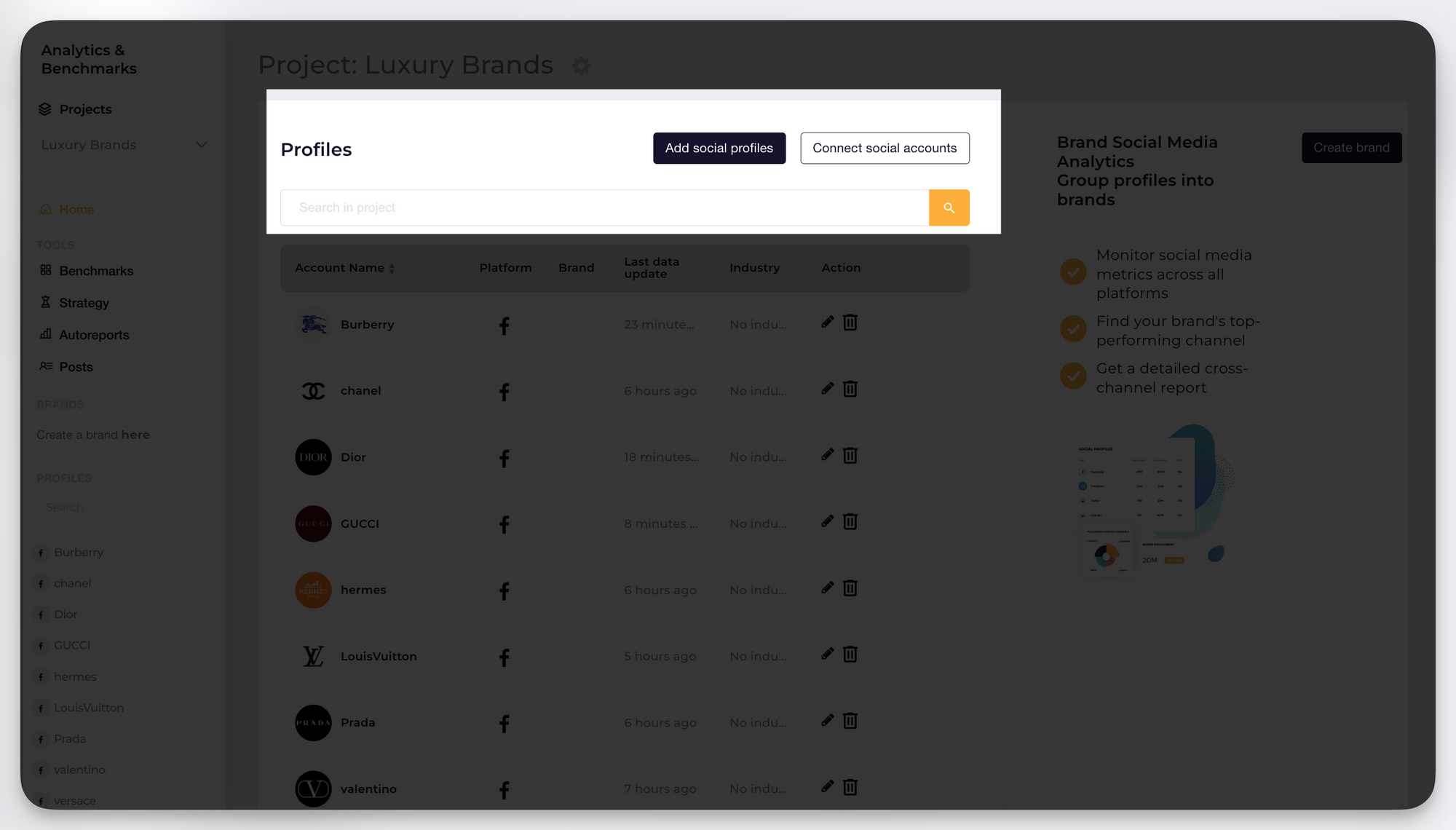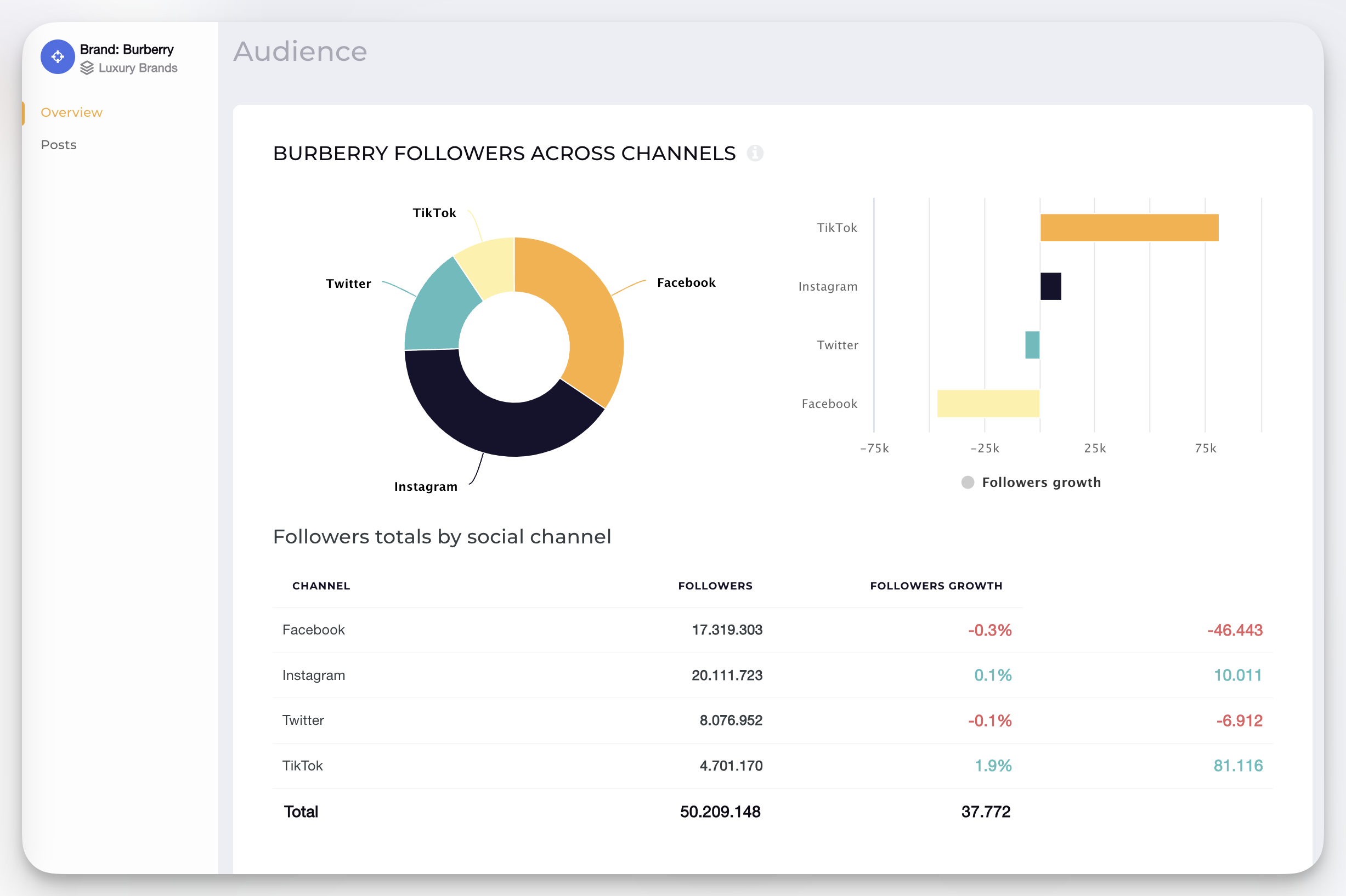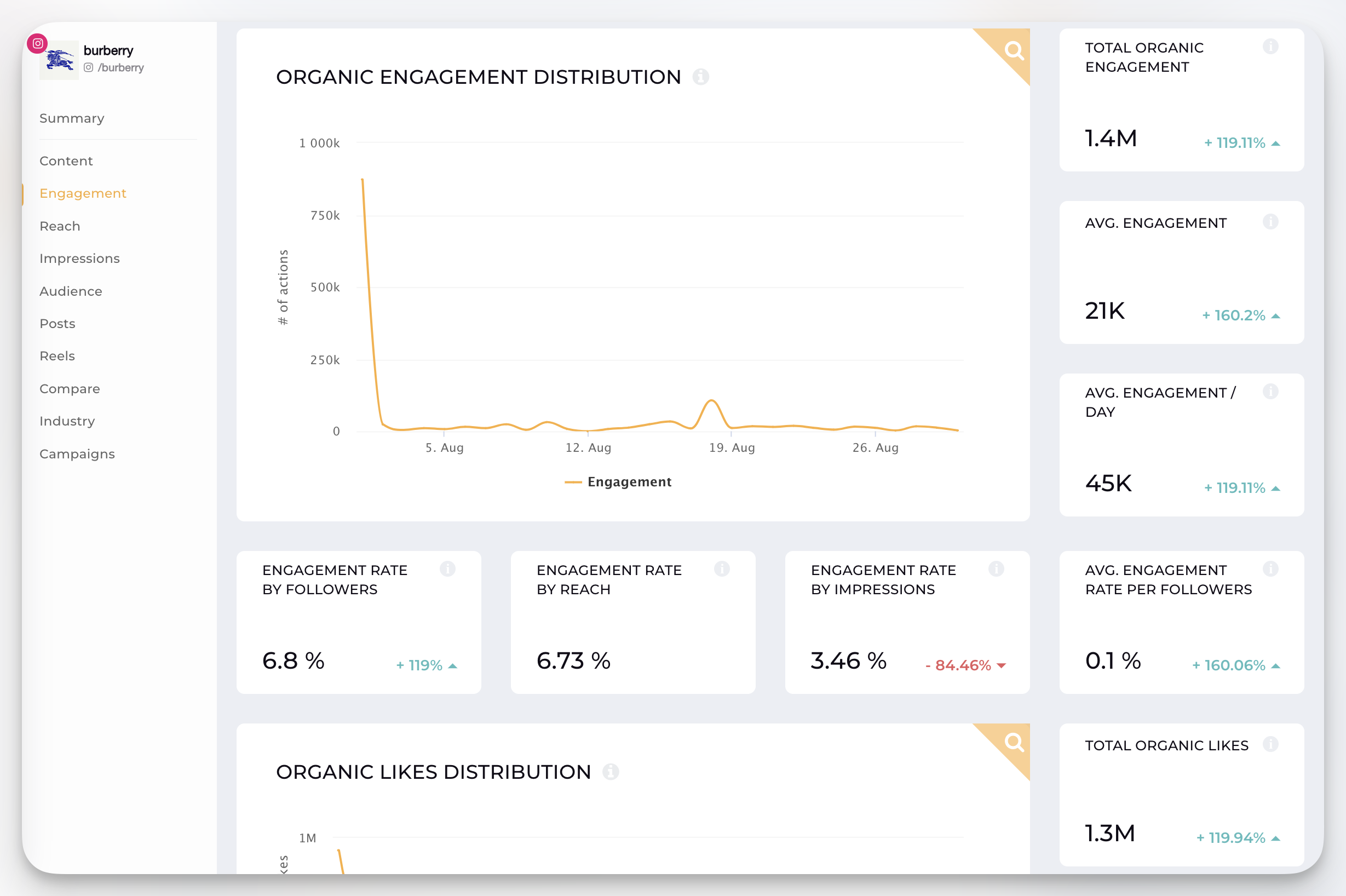Despite what you might have heard, ignorance is not bliss — at least not in business. Simply glancing over what your competition is doing now and then is not what the big players do. Brands that are serious about growth — and survival, for that matter — take competitive intelligence seriously.
Competitive intelligence is essential to innovate, get unstuck, and remain relevant in a highly competitive, fast-moving marketplace. From improving products to creating an engaging social media strategy, looking over your virtual fence is key.
And if you think competitive intelligence is a spy story, think again. It's rather about getting strategic insights into the broader market landscape, identifying patterns and trends, and anticipating challenges.
Okay, but will you have to go through countless data sources, read lengthy documents, and scratch your head to understand it all? No, you don't have time for that — and shouldn't, given today's access to technology.
So, let's explore what competitive intelligence means in 2024, how to use it to be a better decision-maker and strategic partner, and what tools to leverage to seamlessly include it into your daily routine.
Table of Contents
What is competitive intelligence?
Why is competitive intelligence important?
What's the difference between marketing intelligence, competitive intelligence, and business intelligence?
What are the most common types of competitive intelligence?
How to conduct competitive intelligence research
Where to gather competitive intelligence
What your competitive intelligence tool should include
Top tools to use to gain competitive intelligence
FAQs about competitive intelligence
What is competitive intelligence?
Competitive intelligence (CI) involves gathering, analyzing, and strategically using information about rival brands, products, and services. It consists of using various data sources and dedicated tools to get insights into competitors' strengths, weaknesses, strategies, and market positioning.
Competitive intelligence helps businesses develop effective marketing strategies, optimize product development, anticipate market changes, and stay ahead in the industry. It's also a valuable method to identify potential partnerships and other business development opportunities.
Why is competitive intelligence important?
You're not alone in the market, playing a solitary game. There are myriad direct and indirect competitors, some veterans, others just starting out. Each player has a different strategy that ripples in the industry and, inevitably, affects your own operations.
Just as a chess player constantly studies opponents' pieces and next moves, you must analyze your competitors' actions to anticipate what they will do and how that reflects on your position on the board.
Competitive intelligence is essential for businesses hoping not only to remain in the game but also to be among the winners. Here are some reasons you need to make it part of your strategy:
Get a competitive edge
90% of Fortune 500 Companies are doing it. By understanding competitors' strengths and weaknesses, you can identify opportunities to differentiate your products or services and be a top player.
Make strategic decisions
Competitive insights help you anticipate market trends, assess risks, and allocate resources better.
Improve market positioning
Competitive data allows you to adjust your marketing strategies to better target your audience and compete effectively.
Communicate more efficiently
By analyzing competitors' content, you understand what works better to engage your audience and can optimize your publication and distribution tactics.
Develop your business proactively
Understanding industry networks and alliances can help you identify valuable collaborations or acquisitions.
Mitigate risk
Identify potential threats to your business well before it's too late and take measures to address them.
What's the difference between marketing intelligence, competitive intelligence, and business intelligence?
Companies make more informed decisions by using various research and analysis tools.
Marketing intelligence is broad in scope and typically includes information about customer behavior and preferences, developments in the industry or niche, and emerging trends. It helps decision-makers choose the next strategic moves.
Competitive intelligence, though narrower in scope, provides crucial insights into how rivals are promoting their brand, products, and services. It helps various departments, such as marketing, product development, sales, and the C-suite, identify opportunities for differentiation.
Compared to the two above, which gather intelligence by looking outwards, business intelligence (BI) is about looking inwards. Its focus is on the company's own operations and performance and how they can be optimized.
Here's a quick side-by-side comparison:
What are the most common types of competitive intelligence?
Competitive intelligence is an invaluable tool for business growth, so it's important to spend some time understanding its various shades. This will help you conduct research and draw insights like a pro, creating more informative reports and helpful action plans.
Let's go through the four types of competitive intelligence and see how each serves a unique purpose in decision-making.
Tactical competitive intelligence
Tactical competitive intelligence focuses on short-term, actionable insights.
It involves monitoring competitors' day-to-day activities, such as marketing campaigns, pricing changes, product launches, and promotional strategies. It allows you to make agile decisions to respond to competitors' actions and seize opportunities quickly.
A fun and classic example of this is Pepsi's response to Coca-Cola's announcement that it had sold four times more than its rival in 2001. Another one is the more recent Burger King versus McDonlald's billboard chat.
Strategic competitive intelligence
Strategic competitive intelligence is more long-term and gathers data that informs broader business decisions and strategies.
It involves looking at the overall direction of competitors, including their goals, investments, strategic partnerships, and potential market moves.
For example, an electronics manufacturer analyzes a competitor's recent investment in renewable energy technologies. Taking this as a shift towards sustainability, the company decides to accelerate its own plans for green product development and marketing.
Macro-level competitive intelligence
Macro-level competitive intelligence focuses on the external factors affecting the industry. This includes analyzing regulatory changes, technological advancements, and shifts in consumer behavior and preferences.
This type of analysis enables you to anticipate how macro factors might affect the competitive landscape and your business directly so you can proactively adjust operations.
Use tools like Socialinsider's Benchmarking feature to get valuable long-term insights. You can create social media benchmarks, allowing you to compare data across different platforms or specific social media channels. Plus, with access to historical data, you make sure that your analysis has depth and hindsight to help extract social media best practices and make quality predictions.
Imagine you're running a digital marketing agency. By studying social media content, you notice a significant increase in demand for video across platforms. This leads the agency to adjust its offerings and marketing strategy to focus more on video production and advertising. You do this well before other agencies and, as a result, increase the agency's market share.
Micro-level competitive intelligence
Micro-level competitive intelligence puts the magnifying lens on specific competitors, focusing on their products, messaging, target audience, and performance metrics.
By examining competitors at this granular level, you can identify specific strengths and weaknesses, which can be used to refine your strategies. You can do this analysis to understand the success of the biggest market players and to avoid lagging behind innovators.
For instance, social listening gives you insights into target audience conversations to identify areas where competitors' products and services might be lacking. You can then use this information to improve your product offerings or marketing messaging.
How to conduct competitive intelligence research
Now that you've seen how powerful competitive intelligence can be to improve your business' positioning in the market and long-term success (or survival), let's look at the most important steps you must take to benefit from it.
1. Define competitive intelligence objectives and scope
What information do you need to gather about your competitors and why? Are you looking to understand their pricing strategies, product development, marketing tactics, or customer service approaches?
Establishing a clear objective focuses your research efforts and ensures that you collect relevant data that will help you develop essential areas of your business.
2. Identify key competitors (both direct and indirect)
Who are you competing against? Make a clear list that includes two categories:
- Direct competitors — businesses that offer similar products or services to the same target market. For example, if you're an online bookshop, other online bookshops promoting their services to the same target audience and regions are your direct competitors.
- Indirect competitors — brands that provide different solutions that could fulfill the same customer needs. In the case of the online bookshop, indirect competitors include audiobook platforms, digital libraries, physical bookstores, and bigger online retailers that include books in their offerings.
3. Gather competitive intelligence data
The data-gathering step involves identifying potential sources of information and creating documents and reports with important data that can trigger insights.
Typically, businesses gather competitive intelligence data from public online sources like competitors' websites, press releases, financial reports, social media content, customer reviews, and industry reports. They also use dedicated competitive intelligence tools to make more in-depth analyses of large volumes of data.
Leverage technology and use your imagination to uncover important and interesting information about competitors — just keep it legal and moral.
4. Analyze competitive intelligence data
After collecting the data, you can use various methods to analyze it.
Here are a few options:
SWOT analysis
A SWOT analysis creates a competitive intelligence map of strengths, weaknesses, opportunities, and threats compared to competitors.
- Strengths. Identify your company's unique advantages, such as superior technology, strong brand reputation, or efficient operations.
- Weaknesses. Pinpoint areas where your company may be lacking compared to competitors, such as high costs, limited product range, or poor customer service.
- Opportunities. Explore opportunities for differentiation and external factors that could benefit your company, such as growing market demand, technological advancements, or regulatory changes.
- Threats. Identify potential risks or challenges posed by competitors, economic conditions, or industry trends.
This structured approach provides more clarity for where your competitors excel or fall short — and where you can step in to make a difference.
Benchmarking
Benchmarking allows you to compare your company's performance against competitors.
For this comparison, select relevant KPIs, such as customer satisfaction, market share, profitability, or employee turnover. Depending on the type of competitive intelligence you're conducting, KPIs can get more granular. For example, if you're focused on improving your online presence, you might benchmark your website traffic, social media engagement, or email open rates against competitors.
Comparing your company's performance to industry standards or specific competitors allows you to identify gaps and set realistic goals for improvement.
Discover 2024 social media industry benchmarks. Get reports
Trends analysis
Trends analysis identifies patterns and shifts in competitors' behavior that could impact your business. This helps you anticipate changes in customer preferences, technological advancements, or messaging nuances crucial to keeping your business relevant.
Look for changes in competitors' strategies, upcoming product launches, investments in certain business areas, shifts in market positioning, and adjustments in content and targeted audience.
Investigate the why behind these changes and decide if you need to make changes in your own strategy to keep up.
5. Tailor your business strategy
Use the insights gained from your analysis to inform various parts of your business strategy.
Changes can vary. You may go as far as to decide to develop new products and approach new markets. You may also try out a new social media platform or content format.
Whether going for big or small adjustments, the goal is to leverage the competitive intelligence you've gathered to create stronger strategies and tactics that set your company apart from competitors.
The good news is that by constantly watching competitors, you never run out of ideas for improvement.
6. Monitor your competitors and industry trends regularly
Competitive intelligence is not a one-and-done operation.
Change is the only constant, says a famous phrase attributed to the Ancient Greek philosopher Heraclitus. So, you can't settle on knowing the state of facts today. Tomorrow, or next month, or year, the situation may be (radically) different.
Create a routine to regularly track your competitors' activities to stay informed about any changes that could affect your business. If this sounds daunting, don't give up. Instead, leverage tools and technologies that streamline and simplify this process. They are a small investment compared to the risk of playing the game blindfolded.
Where to gather competitive intelligence
Soma data sources are more accessible than others, but it's important to combine several sources to get a comprehensive understanding of your competitors and generate useful insights.
Here are your essential data sources for your competitive detective work:
Competitive intelligence tools
Competitive intelligence tools are software applications that help businesses gather, analyze, and interpret competitor data. These tools provide valuable insights into competitor strategies, streamlining and automating the process.
Socialinsider stands out as a leading platform for competitive social media analysis. With its user-friendly interface, it allows users to perform in-depth analyses of competitors' social media performance.
To get started, simply add competitors' social profiles to your Socialinsider dashboard.

The tool generates an overview of the pages and performance, including key metrics like engagement, reach, and follower growth, in a comprehensive and intuitive social media dashboard.

You can also have a closer look at each platform to identify posting strategies, content pillars, and audience insights.

A useful feature is the quick side-by-side comparison between different brands and social profiles.

Socialinsider also lets you analyze competitors' content based on keywords, topics, or hashtags, identifying the top-performing posts.
With its Benchmarks section that enables you to compare how your social media efforts measure up against industry standards and competitors, Socialinsider offers a comprehensive set of competitive intelligence data.
Competitors' websites
Competitor websites are one of the most common and accessible sources of competitor intelligence data.
And, yes, companies do say a lot about strategies, offerings, and messaging on their website if you're patient enough to read beyond the homepage:
- Product pages reveal details about features, pricing, and customer reviews.
- About Us pages tell you about the company's history, mission, and values. You can also sometimes get information about key employees.
- Editorial content, such as blog posts, ebooks, and thought-leadership pieces, can reveal information about the target market and tailored messaging.
- Media pages include PR announcements that help you stay updated about product launches, major shifts in strategy, acquisitions, and corporate events.
Social media
Social media competitor analysis offers a wealth of information that you can use to improve marketing strategies, product development, customer support ratings, etc.
By monitoring rivals' activity on platforms like Facebook, Instagram, TikTok, or LinkedIn and using social listening tools, you can analyze posts, engagement, and customer feedback, as well as identify changes in strategy.
As shown above, by using tools like Socialinsider, you can track macro trends or drill down to a detailed analysis of your competitors' campaigns, including metrics like engagement, impressions, posting frequency, hashtags used, etc.
Customer reviews and comment data
Customer reviews and comments are a goldmine for firsthand insights into how customers perceive competitor products and services.
Analyze reviews on popular platforms like Google Reviews, Yelp, Trustpilot, G2, and others to identify areas where competitors excel or fall short. Also, pay attention to social media comments, as they provide great insights into customer pain points.
For example, you might notice that many users complain that your biggest competitor's software is difficult to use. You can use that information in your marketing campaigns, highlighting how intuitive and user-friendly your own product is.
News outlets
Industry publications and news outlets keep you updated about competitors' moves, industry trends, new regulations, and important market developments.
They can help you identify possible threats and opportunities, give you precious information about competitor strategies, and help you be ready for upcoming changes in the market.
Patents and trademarks
Competitors won't always make a big fuss about innovations until they are ready to launch them. But by keeping an eye on patents and trademarks, you can find out in advance about upcoming products, intellectual property, and branding strategies.
Research trademark databases to spot new product developments, understand competitors' advantages, and assess potential risks.
Financial reports
Financial reports can be a bit tricky to figure out if you're more of a wordsmith than a data geek, but they offer important information about competitors' financial performance, market share, and strategic investments.
Analyze annual reports and other financial documents to assess rivals' financial health and areas of growth or decline. Subscribe to financial publications and specialized outlets for in-depth analysis of competitor performance and trends in your industry.
Surveys and interviews
Surveys and interviews are a great way to get direct information from your target market. Ask people about competitor products, services, and overall satisfaction with the brand.
You can understand which competitors are top of mind and why, and get insights that help you position your offering in a more appealing way.
By combining all these sources, you will have a wealth of information and different perspectives that can inform different decision-makers and parts of your business.
Now, let's put some order into this insightful chaos and structure your competitive intelligence analysis.
What your competitive intelligence tool should include
By now, it's clear that gathering and analyzing all this information manually is a herculean task. Even if you're up for it, you're bound to miss out on crucial information just because there are so many data sources that get updated all the time.
Leveraging competitive intelligence tools is a no-brainer for businesses of all sizes. These tools help smaller businesses develop sustainable growth strategies, and bigger, more established brands maintain their position in the market.
When choosing your tool, make sure it offers the following essential elements:
Side-by-side comparison
A good tool should provide side-by-side metrics, such as follower count, engagement rates, and content performance, enabling you to see how you measure up in real-time.
This feature allows you to directly compare your business's performance against that of your competitors or to quickly stack up different competitors among themselves.
Competitor benchmarks
It's easy to get biased and draw the wrong conclusions without context. You may see your community grow month to month and believe you're doing a great job. Or see a competitor's stats decline over a few weeks and conclude their campaigns are a bust. But what does the big picture say?
Competitor benchmarks are essential because they offer insights into the average performance of your rivals across various metrics. Through these benchmarks, you can better understand what is poor, normal, or excellent performance and adjust your strategies accordingly.
Benchmarks also allow you to set realistic goals and adjust your business expectations based on facts.
Industry benchmarks
In addition to competitors' benchmarks, your competitive intelligence tool should include industry benchmarks.
These provide a broader view of performance standards within your industry over longer periods, giving you a necessary understanding of how well your business is performing relative to the overall market.
Historical data for comparison
Pay close attention to this as not many tools offer it — or offer sufficient depth for this data.
Access to historical data is crucial for understanding trends and patterns over time. A good competitive intelligence tool should allow you to track performance metrics across a defined period, ideally over several months or even a year, to help you analyze how strategies have evolved.
Without historical data, you're looking at a point in time that lacks context and makes it difficult to see patterns and trends.
Tracking keywords and hashtags campaigns
Speaking of trends, if you want to remain relevant and produce content that generates engagement and conversations, you should monitor the keywords and hashtags used by your competitors.
Ensure the competitive intelligence tool you choose enables you to track these elements to understand competitors' content strategies and find opportunities to engage with your audience more effectively.
Social media API
Social media API integration is essential for accurate and up-to-date data collection.
A competitive intelligence tool with robust API connections can pull data directly from social media platforms, so you get the most current information available for your analysis.
Make sure to check if the tools provide these integrations and how often you can expect fresh data to be pulled from third-party platforms. It's one thing to get new data daily or weekly and another thing to see hourly trends and be able to do some real-time marketing magic.
Top tools to use to gain competitive intelligence
Let's look at some of the most useful and popular competitive analysis tools that you can start using immediately to gain a competitive edge.
#1. Socialinsider - a comprehensive tool for competitive intelligence
When it comes to competitive intelligence, Socialinsider checks all the boxes to offer businesses comprehensive, visually appealing, and user-friendly reports.
The platform's strength lies in in-depth competitor analysis, industry benchmarks, and cross-channel insights. It empowers marketers to optimize their social media strategies and get a seat at the decision-making table.
Here's what you can do with Socialinsider:
- Conduct head-to-head comparisons of your brand's social media performance against competitors. Identify their strengths and weaknesses, benchmark your metrics, and uncover opportunities for improvement.
- Access industry benchmarks to understand how your brand stacks up against the competition. Gain valuable insights into average performance metrics and identify areas where you can excel.
- Analyze competitor performance across multiple social media platforms to understand their best-performing channels and identify trends in your niche.
- Categorize and analyze competitor content based on keywords, topics, or hashtags. Identify top-performing posts and understand the factors contributing to their success — and adapt them to your needs.
- Access a suite of social media analytics tools for platforms like TikTok, Instagram, LinkedIn, Facebook, Twitter, and YouTube. Measure and analyze audience engagement, follower growth, and content performance.
- Understand patterns and trends with historical data for competitive insights that can go as far back as 6 to 12 months, depending on your plan.
Given the breadth and depth of Socialinsider's competitive data analysis, you can more easily optimize business strategies, make informed decisions, and outperform competitors.
Let's look at some practical ways in which you can use this data:
- Build social media personas that help you better target your messaging and paid campaigns.
- Set realistic social media goals based on industry averages and competitors' historical performance.
- Identify content gaps and create posts that fill those audience needs and attract a larger following.
- Optimize your social media posting schedule, content types, and engagement tactics. For example, if you notice that your competitors are seeing success with video content, you might consider incorporating more videos into your own strategy.
- Improve social media SEO by observing competitor best practices and monitoring popular keywords and hashtags.
- Track your social media ROI and compare it to your competitors to improve social media spending.
The tool is great for in-house teams and also for agencies or freelancers juggling multiple brands. As one user explains, "I love that I can set up benchmarking sets to compare several competitor brands to my client, which is helpful for monitoring competitors as well as my client's progress. Socialinsider is a great tool for understanding industry trends!"
Try Socialinsider for free for 14 days and start generating competitive intelligence reports in minutes.
#2. Competitive ads intelligence tools
Platform-specific ad libraries like the ones offered by Meta, TikTok, and LinkedIn can provide valuable social media insights into competitors' advertising strategies.
By analyzing the ads competitors are running, including their creative elements and target demographics, you can gain insights into their marketing tactics and adjust your campaigns accordingly.
The drawback of accessing each platform separately is that you can't easily do a cross-platform analysis. You also only get access to a number of limited metrics, depending on each platform, but don't have centralized reports about a wider array of metrics, such as organic vs paid social media insights.
#3. Google Alerts - for competitor mentions
Google Alerts is a platform that enables monitoring the web for specific keywords and competitor mentions.
You can set up alerts for free for your competitors' names, products, or relevant industry terms and get a notification each time that word or phrase pops up in the news or on various websites.
This helps you stay informed about competitors' activities, new content, product launches, and other important information in your industry.
#4. LinkedIn - for updates and networking
Follow your competitors on LinkedIn to see company updates and understand their positioning, professional messaging, and employer branding strategies.
LinkedIn is also very helpful for researching your competitors' connections and finding opportunities to expand your network, create partnerships, and engage meaningfully with prospects.
#5. Ahrefs - for website data
Ahrefs is a good tool for website data analysis, providing insights into competitors' SEO strategies, backlinks, and keyword rankings.
With Ahrefs, you can monitor your competitors' website traffic, identify high-performing content, and uncover opportunities to improve your own site's visibility and search rankings.
#6 Owler - for competitor news, financials, and executive changes
Owler is a platform that helps you access detailed company profiles, including revenue estimates, employee counts, and recent news updates.
Owler is useful for staying informed about significant developments within your competitors' organizations and the broader industry landscape.
Choose the tool that best fulfills your business needs, and test it before deciding. As Hemchandra Shetty, LinkedIn Top Business Strategy Voice, advises when talking about how you can find the best competitive intelligence tools, "One key strategy is leveraging trial periods. These allow you to test the tool's capabilities in a real-world setting, providing first-hand experience of its strengths & weaknesses."
Final thoughts
Competitive intelligence is a must-have tool for all businesses, from solopreneurs to large organizations. Getting insights about what your rivals are doing, their promotional strategies, unexpected moves, and people's perceptions about them is essential to shaping your own successful business plan. Moreover, industry benchmarks are essential for sustainable, realistic growth.
By now, you should have a good understanding of what competitive intelligence is, how it can help, and how to start generating your own informative, valuable reports. The resources and tools highlighted above should provide enough fuel to set your thinking engines in motion and come up with action plans that will take your brand to new heights — ideally, looking down on competitors.
FAQs about competitive intelligence
How is marketing research different from competitive marketing intelligence?
Marketing research and competitive intelligence have different, though complementary, scopes and purposes. Marketing research focuses on understanding the target audience, market trends, and consumer preferences. Its purpose is to help stakeholders optimize marketing strategies. Competitive marketing intelligence, on the other hand, specifically involves gathering and analyzing data about competitors to understand their strategies, strengths, weaknesses, and market positioning. Its purpose is to help the business gain a competitive edge. Both marketing research and competitive intelligence are essential for strategic planning.
What is competitive intelligence in marketing?
Competitive intelligence in marketing is an ongoing process that involves gathering, analyzing, and using information about competitors' marketing strategies and activities to optimize a brand's own performance. The goal of competitive intelligence in marketing is to help marketing teams develop more effective promotional strategies and campaigns to support business goals and, ultimately, outperform competitors.
How is competitive intelligence used?
Competitive intelligence is used to make informed business decisions, taking into account context and competitor activity. With access to insights into competitors' strategies, target audiences, and performance metrics, decision-makers can identify opportunities for growth, mitigate risks, and refine marketing and sales strategies. If used to its full potential, competitive intelligence has the power to give businesses a strategic edge in the market.
Which tool can be used to gather competitive intelligence from social media?
Socialinsider is the most intuitive and helpful tool for gathering competitive intelligence from social media. It provides an in-depth analysis of competitors' social media activities, cross-channel reports, side-by-side comparisons, industry benchmarks, and access to historical data. Other tools, like platform-specific ad libraries, also offer valuable insights into competitors' social media advertising strategies, though more limited in capabilities than a dedicated competitive intelligence tool.
How can artificial intelligence help businesses gain a competitive advantage?
Artificial intelligence can help businesses gain a competitive advantage by automating data collection and analysis, identifying patterns and trends, and providing actionable insights faster than traditional methods. AI marketing tools can analyze vast amounts of data from various sources, such as social media, websites, and customer interactions, enabling businesses to respond quickly to competitive challenges.
What is a competitive intelligence report?
A competitive intelligence report is a document or page that compiles the insights and analysis gathered about competitors and the market. The report can be more general, including top-level information on competitors' key performance metrics, or it can be more specific, drilling down into various areas of interest, such as TikTok post performance, for instance. Competitive intelligence reports are helpful to all stakeholders, as they can inform decision-making at all levels.







